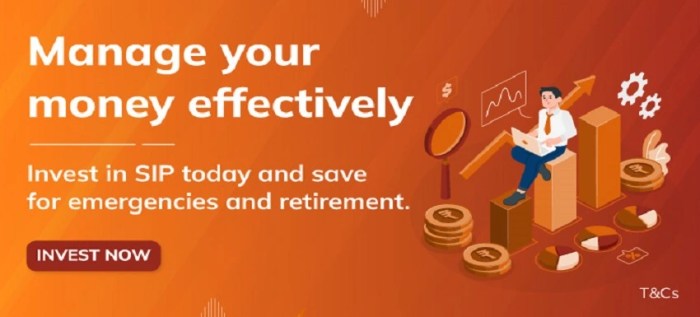
Debt mutual funds in rising interest rates present a unique challenge and opportunity for investors navigating the shifting landscape of fixed-income investments. As interest rates climb, understanding how these changes impact debt mutual funds is crucial for making informed investment decisions.
This overview explores the intricate relationship between rising interest rates and debt mutual funds, shedding light on the importance of credit risk and duration in determining fund performance. By considering key investment strategies, investors can better position themselves in a fluctuating economic environment.
Understanding Debt Mutual Funds in Rising Interest Rates

Debt mutual funds are an essential component of many investors’ portfolios, particularly during periods of fluctuating interest rates. As interest rates rise, the dynamics of these funds change, presenting both challenges and opportunities for investors. An understanding of how rising interest rates impact debt mutual funds can provide valuable insights into navigating market conditions effectively.When interest rates increase, the prices of existing bonds typically decline.
This inverse relationship can lead to a decrease in the net asset value (NAV) of debt mutual funds, which hold these bonds. As the NAV drops, investors may see reduced returns, especially in the short term. Additionally, the performance of debt mutual funds is influenced by factors such as credit risk and duration, which play crucial roles in determining how these funds react to rising interest rates.
Impact of Credit Risk and Duration on Performance
Credit risk refers to the possibility of a borrower defaulting on their obligations, which can significantly affect the performance of debt mutual funds. Funds that invest in lower-rated bonds may offer higher yields, but they come with increased risk. During periods of rising interest rates, higher credit risk can lead to more pronounced price declines for these riskier assets. Investors should be aware that as interest rates rise, the market may react adversely to perceived credit risks.Duration is a key measure of interest rate sensitivity, indicating how much the price of a bond or bond fund is expected to change in response to interest rate movements.
A longer duration means the fund is more sensitive to interest rate changes, leading to greater potential price volatility. Understanding the duration of a debt mutual fund is essential, as it helps investors gauge the level of risk they are undertaking in a rising interest rate environment. The following factors are crucial for investors considering debt mutual funds during interest rate hikes:
- Fund Duration: Evaluate the average duration of the fund’s portfolio to assess interest rate sensitivity.
- Credit Quality: Review the credit ratings of the bonds within the fund to understand the associated risks.
- Yield Curve Position: Analyze how the fund’s holdings align with the current yield curve, as this can influence returns.
- Manager Expertise: Consider the track record of the fund manager in navigating interest rate changes, as experience can be invaluable.
- Liquidity Needs: Assess personal liquidity requirements to determine the suitability of long-term debt investments.
Keeping these factors in mind can help investors make informed decisions about their investments in debt mutual funds during periods of rising interest rates. It is essential to balance potential returns with the risks involved to develop a well-rounded investment strategy.
Strategies for Investing in Debt Mutual Funds
In a rising interest rate environment, investing in debt mutual funds requires thoughtful strategies. Investors must navigate potential pitfalls while seizing opportunities that can arise from changes in interest rates. By implementing effective strategies, individuals can optimize their investment outcomes and minimize risks associated with fluctuating rates.One of the primary considerations is understanding the impact of interest rate changes on the performance of debt mutual funds.
As rates rise, the value of existing bonds typically decreases, which can lead to losses in certain funds. Therefore, selecting the right funds and managing the portfolio effectively is crucial.
Selection Strategies for Debt Mutual Funds
When selecting debt mutual funds in a rising interest rate environment, consider the following strategies to ensure optimal investment decisions:
- Focus on Short to Intermediate Duration Funds: These funds tend to be less sensitive to interest rate hikes compared to long-duration funds. With shorter maturities, they are less exposed to capital losses when rates rise.
- Consider Floating Rate Funds: Floating rate funds invest in instruments with interest payments that adjust periodically. This characteristic helps protect against rising rates, as the yields on these instruments increase with market rates.
- Evaluate Credit Quality: In uncertain environments, prioritize funds that invest in higher credit quality securities. This reduces risks associated with potential defaults, especially when economic conditions tighten.
- Look for Experienced Fund Managers: Consider funds managed by experienced professionals who can actively adjust the portfolio in response to changes in interest rates and economic conditions. Their expertise can be invaluable in navigating volatility.
Active vs. Passive Management in Debt Mutual Funds
The choice between active and passive management can significantly influence investment outcomes in debt mutual funds, especially in a rising interest rate scenario. Active management involves fund managers making strategic decisions to buy and sell securities to outperform market indices. This approach can be advantageous in volatile environments where managers can react swiftly to interest rate changes. Active managers may adjust durations and credit exposures based on their forecasts, potentially mitigating losses or capitalizing on opportunities.In contrast, passive management typically involves tracking a specific index, resulting in lower fees and less frequent trading.
While less flexible, this approach may provide stability and predictability, appealing to long-term investors who prefer a buy-and-hold strategy. Both strategies have their merits; however, during periods of rising interest rates, active management may offer a competitive edge by allowing for tactical adjustments in the portfolio.
Timing Entries and Exits in Debt Mutual Funds
Understanding when to enter or exit debt mutual funds is essential, particularly as interest rates fluctuate. The following insights can guide investment timing based on interest rate forecasts:
- Monitor Economic Indicators: Keep an eye on economic indicators such as inflation rates, employment data, and central bank policies. These factors often precede interest rate changes and can signal potential adjustments in your investment strategy.
- Assess Interest Rate Trends: If the prevailing sentiment indicates that rates are likely to rise further, consider reducing exposure to long-duration funds to minimize potential losses.
- Utilize Interest Rate Forecasts: Pay attention to forecasts from credible financial institutions and analysts. Informed predictions can aid in deciding when to invest or take profits.
- Look for Optimal Entry Points: If rates stabilize or begin to decline, it may be an opportune time to reinvest in debt mutual funds. Lower rates can enhance the value of existing bonds, making this a strategic entry point.
“Investing in debt mutual funds during rising interest rates requires strategic planning and timely adjustments to achieve desired outcomes.”
By applying these strategies, investors can better navigate the complexities of debt mutual funds and maximize their potential returns in a shifting interest rate landscape.
Related Investment Topics

Debt mutual funds play a significant role in a balanced investment portfolio, often complementing other asset classes like stocks, commodities, and day trading. Understanding how these various investment types interact can help investors make informed decisions and achieve their financial goals. In this discussion, we will explore the integration of debt mutual funds within broader investment strategies, their role in retirement planning, and a comparative analysis with other investment vehicles.
Integration of Debt Mutual Funds in Broader Investment Strategies
Debt mutual funds can serve as a stabilizing force within a diversified investment portfolio. By providing fixed-income returns, they can offset the volatility typically associated with stocks and commodities. Here’s how they fit into different investment strategies:
- Stocks: While stocks offer growth potential, they also come with higher risk. Debt mutual funds can help balance this risk by providing steady income. Investors often allocate a portion of their portfolio to debt funds to cushion against stock market fluctuations.
- Commodities: Commodities can be unpredictable and are influenced by various global factors. Investing in debt mutual funds can provide a counterbalance, ensuring that while one asset class may be underperforming, the other continues to yield returns.
- Day Trading: For active traders, debt mutual funds might not be the primary focus, but they can still play a role. Having a portion of one’s capital in debt funds can ensure liquidity and provide a safety net during high-volatility trading periods.
Role of Mutual Funds in Retirement Planning
Mutual funds, including debt mutual funds, are crucial for effective retirement planning. They offer a range of options tailored to different risk appetites and time horizons. Here’s how they perform across various economic conditions:
- In Bull Markets: Debt mutual funds typically underperform compared to equities, but they still provide essential income and stability, reducing overall portfolio risk.
- In Bear Markets: These funds can shine as they offer protection against significant losses, maintaining capital while equities may decline.
- During Economic Recessions: Debt mutual funds generally exhibit lower volatility, making them a safer choice when economic indicators signal downturns.
Comparison of Debt Mutual Funds with Other Investment Vehicles
Understanding the distinctions between various investment options helps investors make informed choices. Below is a table showcasing key differences between debt mutual funds and other investment vehicles, such as futures and commodities.
| Investment Vehicle | Risk Level | Return Potential | Liquidity |
|---|---|---|---|
| Debt Mutual Funds | Low to Moderate | Stable, Fixed Income | High |
| Futures | High | High, Volatile | Moderate |
| Commodities | Moderate to High | Variable | High |
“Debt mutual funds provide stability and fixed income, making them a wise choice within a diversified investment strategy.”
Summary
In conclusion, navigating debt mutual funds during periods of rising interest rates requires a well-informed approach and strategic planning. By understanding the dynamics at play and employing effective investment strategies, investors can effectively manage risks and seize opportunities for growth in their portfolios.
Expert Answers
How do rising interest rates affect debt mutual funds?
Rising interest rates typically lead to a decrease in the value of existing bonds, which can negatively impact debt mutual fund performance.
What role does credit risk play in debt mutual funds?
Credit risk refers to the possibility that bond issuers may default on payments, which can significantly affect fund performance, especially in a rising interest rate environment.
Should I invest in debt mutual funds during interest rate hikes?
It depends on your risk tolerance and investment strategy; consider diversifying and focusing on funds with shorter durations to mitigate risks.
How can I determine the right time to exit a debt mutual fund?
Monitoring interest rate forecasts and economic indicators can help you decide the optimal time to exit based on anticipated rate movements.
What are the advantages of active vs. passive management in debt mutual funds?
Active management can potentially outperform in volatile markets by adapting to changing conditions, while passive management usually has lower fees and can be more predictable.






